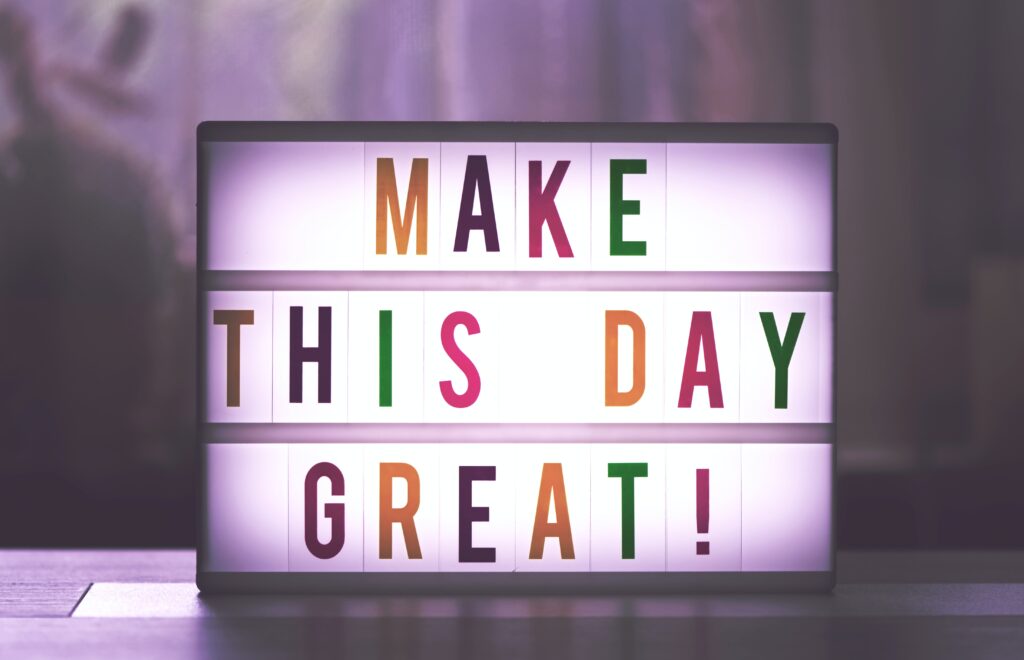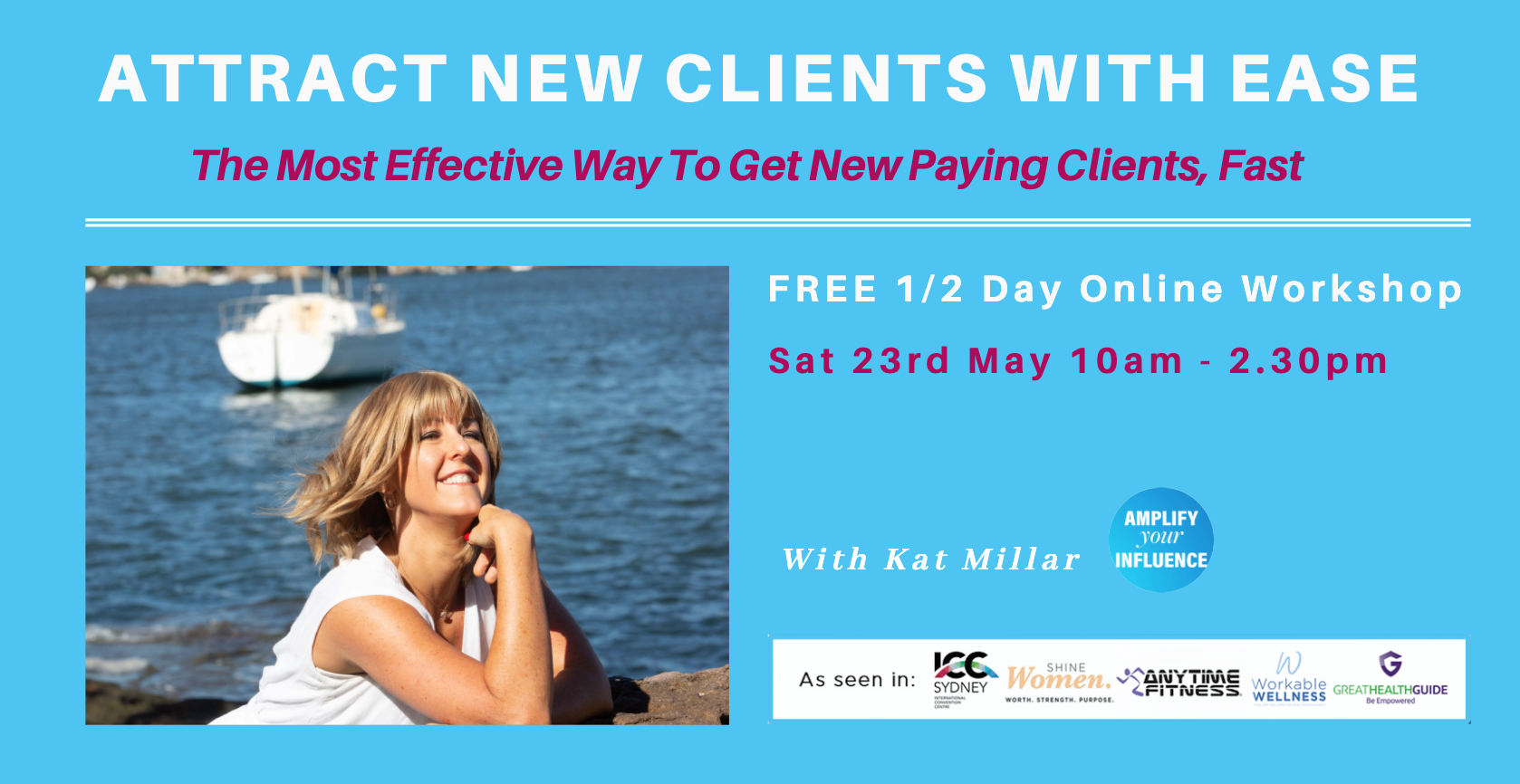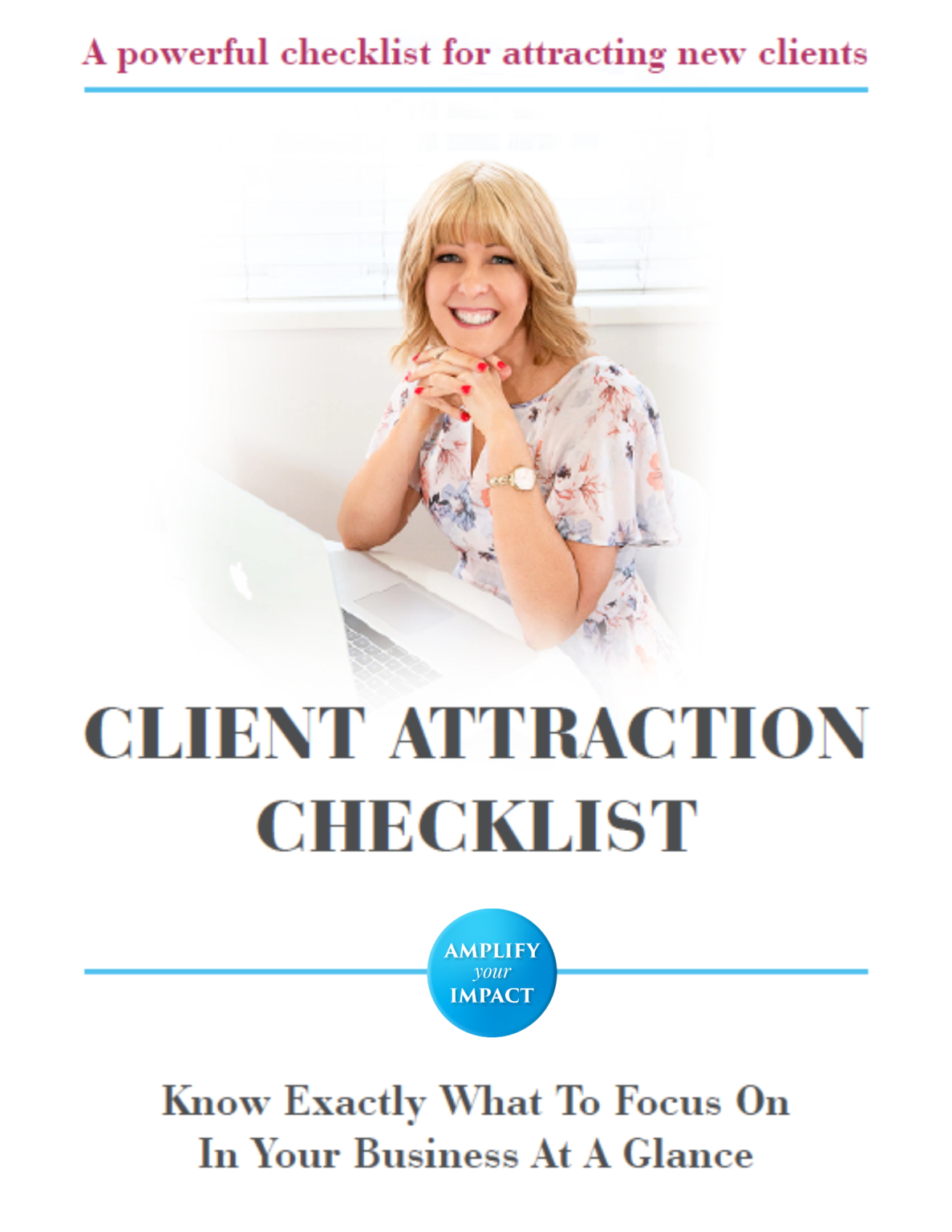What’s your next level? Is there something you want to do next that you’re not currently doing?
I recently spoke at an event and asked this question to the audience. A lot of people came up to me afterwards saying they haven’t thought about their next level for a while. It’s something that can slip to the back of our mind as we get caught up in day-to-day life.
Your next level might be running a webinar or an event.
Or maybe it’s writing an online course or a book.
It might be asking for a promotion or a raise.
Or maybe it’s starting a business or a side hustle.
What makes you excited?
Your next level could be something you’ve been thinking about for a while, but you’ve put it off. And it sits in the back of your mind… or in a note in your phone… or in a journal… or maybe you’ve shared it with a friend.
Your next level is usually something you’re a bit scared to do – or you feel like you don’t have time to do.
But if you’re totally real with yourself, you know you want to step up. And there’s often a quiet voice inside us whispering for you to go after it.
Our next level is where our growth is. And growth is ultimately what makes our life fulfilling and meaningful.
Your next level will give you a sense of progress and purpose. And progress and purpose ultimately is what makes us fulfilled and excited and gives our life meaning.
Sometimes we think we have to take a massive leap to change our life, but our next level is just ONE action away to get started

Imagine you’re in a bulls eye in the centre of a target board. The bulls eye represents your comfort zone. Your big picture vision is the very outer ring. And your next level is in the ring right next to you.
Sometimes we think we have to take a maaaassive leap to, but your next level is not miles away. It’s usually just one action away to get started. One decision
The challenge is resistance, like fear or doubt can surround us like an invisible boundary. But often the resistance isn’t real, it’s imagined.
We think we’re staying comfortable, but the truth is, the comfort zone starts to get really uncomfortable.
The comfort zone is the great enemy to success.
Over the last 18 years helping people get results and transform their lives, I’ve discovered there are 3 main problems that most people face when it comes to going to their next level.
1 – Not Having The Right Strategy
The first problem is not having the right strategy – when we don’t know where to start, we don’t know the steps or have a solid plan.
2 – Not Having The Right Structures

The second problem is not having the right structures. High achievers and high performers have intentional structures in their lives that grow them. Structures create outcomes.
Without structures, our brain naturally takes the path of least resistance.
When we study nature, we find the principle of the path of least resistance everywhere. Think about a riverbed. A riverbed is an underlying structure that causes the stream of water to flow the way it does.
And it’s the same for us in our lives.
Our mind is designed to conserve energy – it’s called the law of conservation of energy.
We think we want to go to the gym, but we find ourselves on the lounge watching Netflix.
The cool thing is, we can change our structures.
We can put new structures in – like success habits and consistent appointments and commitments that can change our life.
How we got to where we are today is by following certain structures.
Our future is determined by the structures we put in place in our life today.
3 – Not Having The Right Support
And the third problem I see people face is not having the right support. We become who we hang around.
When we spend time with people who are pessimistic, we can become pessimistic. Have you noticed this?
When we don’t seek out the right mentors and mastermind groups, our lives can stay small and stuck.
When you spend time with people who are supportive and uplift you, then you are more likely to go to that next level.
Not having the right strategy, structures, and support, are three things that can put a handbrake on you going to the next level.
When I realised this, I started putting these three things in place with the help of coaches, and I went from being pretty miserable, to having a life that I love.
And now I’m helping other people because I love it. I’ve helped thousands of people go to the next level of their lives and get the results they want.
The majority of people who have gone to the next level, whether they’re stepping up and running an event or running a webinar, or committing to consistent content or committed to learning new skills, they have said to me that it’s actually easier than they thought it would be. Sometimes we make it so big in our head. A lot of people really over-complicate business, and they make it super complex.
But when you sit down and you take it step-by-step and you follow a proven strategy that’s personalised to you, it’s so much easier to go to the next level than you think.
It All Starts With Your Thoughts
What these 3 things all have in common, is they all start with your thinking.
Think back to a time where you had achieved a successful result. What were you thinking at the time of achieving that successful result?
Now think back to a time where you were struggling. What were your thoughts when you were struggling? Was your thinking different? Usually, when you are struggling it’s negative thoughts you are thinking.
The National Science Foundation published an article that found that the average person thinks about 60,000 thoughts a day and 80% of the thoughts were negative.
Our brain is wired to look for what’s wrong. It’s a survival mechanism. It’s there to keep us safe. Our brain is designed to find the predator and see the threat. Because our brain is designed to follow this path of least resistance, we need to be really intentional to not allow ourselves to fall into that path.
 The path of least resistance and comfort actually becomes really uncomfortable in the end. You don’t drift to success or to your next level. You have to be super intentional and it starts with intentional thinking.
The path of least resistance and comfort actually becomes really uncomfortable in the end. You don’t drift to success or to your next level. You have to be super intentional and it starts with intentional thinking.
It takes a real focussed decision to change our thinking and to push through that boundary of resistance to the next level. You need to identify the resistance that’s coming up in you.
You need to intentionally look for and focus on the positive. So I’m going to give you a simple model that explains this. I talked about this model last week and it’s my TEAR mode.
The TEAR Model
The TEAR model is super simple, but it’s really powerful if you use it as a model and apply it to your life.
T = Thoughts
E = Emotions
A = Action
R = Results
Your thoughts lead to your emotions. Your emotions, lead to your action and your actions lead to your results.
Looking At Your Current Results Through The TEAR Model
If you look at your current results and if you’re not happy with your current results you want to look at the actions that are leading to those results. On a piece of paper, start with writing down your current results.
The current result could be that you only have 5 clients a week, but you want 10 clients. (Separate emotions from this when you do it and just be factual.)
Then you look at what actions you are taking to get you those current 5 clients (your results.)
What do you spend time doing to get those current results? Do you spend time playing around making something look pretty on Canva when you know you should be making an automation funnel? Or do you know you are meant to step up and do video, but keep putting it off?
Next, you want to look at the emotions that are leading to your actions. Maybe it’s overwhelm, or you’re feeling frustration, confusion or apathy. Take a look at how you are feeling and write it down.
These are the emotions that are leading to the negative thoughts that are stopping you from taking action. You could be thinking thoughts like, “I’m scared of failure” or “People might judge me”.
Often these thoughts are happening at a subconscious level and driving your decisions.
Looking At Your Desired Results Through The TEAR Model
Next, you want to write down your desired result. That could be increasing your clients or the amount you are earning. Then you need to decide the actions you need to take like running a webinar or posting consistent content or reaching out to 10 people a day.
To take those actions, you need to look at your emotions and choose emotions like determination, inspiration, passion.
Finally, we need to look at the thoughts we need to think in order to feel those feelings and take the actions.
They could be thoughts like…
“I’ll find a way. I’ll make a way!”
or “The right people are waiting for me”
or “I will do it, even if I’m scared”
or “I can handle it”
Earl Nightingale said “We become what we think about most of the time”.
So what are you thinking about most of the time? And what do you need to be thinking about in order to get what you want?
People who get what they want think differently to people who don’t get what they want.
How much time each day are you spending thinking about what you do want?
How much time each day are you spending with people who have the results you want?
We become who we hang around. If you’re not hanging around with successful people who have the results you want, then it’s going to be a long road to get to success.
Remember, your next level will give you a sense of progress and purpose and ultimately is what makes life fulfilling, exciting, and meaningful.
Want help to grow your business?
Do you want help to attract more aligned clients consistently, so you can grow a profitable, lifestyle-friendly business that you LOVE?
I offer a free 45-minute business strategy session, where you’ll get personalised guidance, direction, clarity, and a clear action plan.
I’ll walk you through a proven business growth roadmap and personalise it to show you exactly what you need to do to hit your financial and freedom goals.
This is only for people who haven’t had a free strategy session with me yet and are ready and committed to growth.
Looking forward to connecting with you!
Kat

 Our results are based on our actions, our actions are based on our feelings and all of it is coming from our thinking and the stories that we tell ourselves. These stories include how we think about ourselves.
Our results are based on our actions, our actions are based on our feelings and all of it is coming from our thinking and the stories that we tell ourselves. These stories include how we think about ourselves. How often are you having these commands that are going to get you that result? “I absolutely can create 10k a month as a business owner, and I will keep going until I find a way.”
How often are you having these commands that are going to get you that result? “I absolutely can create 10k a month as a business owner, and I will keep going until I find a way.” Fast lane activities are: directly contacting people, sales calls, and private messages.
Fast lane activities are: directly contacting people, sales calls, and private messages.



